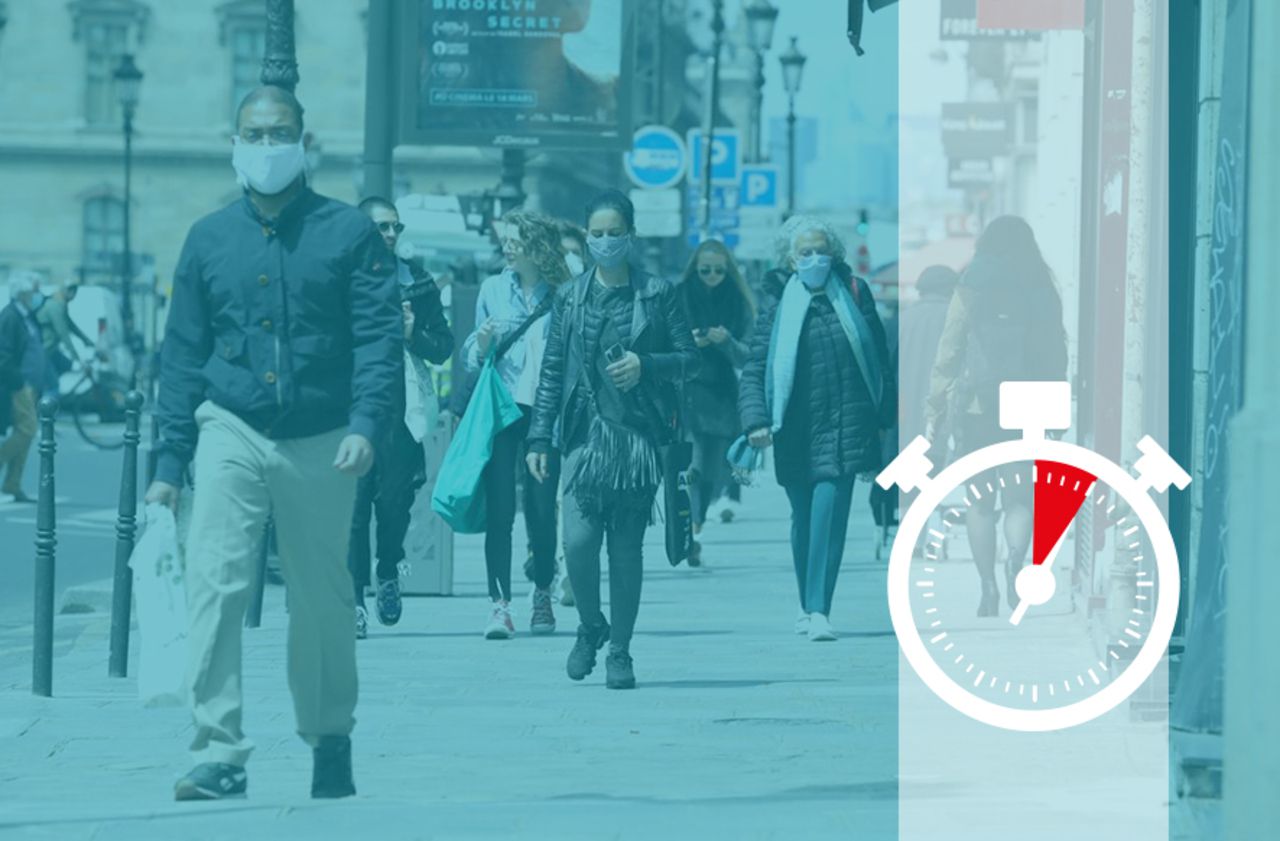The SARS-CoV-2 coronavirus, as we know, is transmitted by secretions from the mouth or nose. Hence the need to protect yourself and be careful when you sneeze or cough, in particular. But Covid-19 could also be transmitted via microscopic droplets, which are able to "float" in the air for several hours due to their lightness.
This hypothesis, already mentioned in the past, comes up in the news with the alert launched by 239 scientists. They are signing an open letter this week, revealed by the New York Times and addressed to the World Health Organization (WHO) asking it to revise its recommendations. We take stock.
What is an aerosol?
An aerosol is, according to its usual definition, "a solid and / or a liquid suspended in a gas". Its diameter is less than 10 micrometers (µm). "These are microdroplets which are very small and can remain suspended in the air by floating for several hours, even if they end up sedimenting and crashing to the ground after a while", points out to the Parisian virologist Yves Gaudin, from the Institute for Integrative Cell Biology (I2BC) at Paris-Saclay.
“The smaller they get, the lighter they are. This means that these particles do not fall so easily, but remain in the air and sometimes for a long time, "also noted from May 12 in his biweekly podcast the famous German virologist Christian Drosten.
These microdroplets may also contain coronavirus, the diameter of which is less than 200 nanometers (nm), although it is not known precisely in what quantities and with what potential for infectivity. In addition, "the maximum transmission distance of an aerosol of SARS-CoV-2 could be four meters", according to a study carried out in a field hospital of Wuhan and published on April 10 by the American Centers of prevention and disease control (CDC).
What do the researchers who sign the open letter say?
According to these 239 researchers and experts, who base themselves on experiments carried out in 32 countries, the coronavirus is also transmitted "by much smaller expired droplets" and this air "can infect people when it is inhaled". This could happen by simply speaking or exhaling air while breathing, especially if people are not protected by a mask, not just by coughing or spitting. "We have known since 1946 that coughs and conversations generate aerosols," points out Linsey Marr, a specialist in aerial transmission of viruses at Virginia Tech, in the New York Times.
They therefore ask WHO to revise its recommendations. Because the organization does not specifically warn against this risk of airborne transmission. As she writes on her page devoted to the coronavirus - and regularly updated -, "the disease is mainly transmitted from one person to another by means of respiratory droplets expelled by the nose or by the mouth when a sick person cough, sneeze or speak. These droplets are relatively heavy, do not travel great distances and quickly fall to the ground. ” The virus that they can contain then has the capacity to last several hours or even a few hours maximum on certain surfaces, such as plastic or steel.
Are they the first to sound the alert?
No. In recent weeks, other scientists have warned of the risk of airborne coronavirus transmission. “Infectious viruses can be present in these fine aerosol particles. And infectiousness can last for several hours, ”estimated Christian Drosten on May 12.
Newsletter - The essentials of the news
Every morning, the news seen by Le ParisienI'm registering
Your email address is collected by Le Parisien to allow you to receive our news and commercial offers. Find out more
"There is not yet definitive proof, but I think it is even the main mode of transmission of the virus", judge for his part Yves Gaudin. According to the virologist, in clusters that are identified in closed and poorly ventilated places, such as slaughterhouses, "contaminations are not only carried out by large droplets and by surfaces, especially when people breathe hard enough because of the physical work they do. "
What could it change?
Several things. As the virus would therefore also be transmitted by air, "you have to ventilate the rooms a lot, even if the weather is a little less good outside, and pay attention to the air conditioning and everything that stirs air in closed circuit ”, points Yves Gaudin. "The ventilated but poorly ventilated rooms are places where it is easier to get contaminated," said virologist Jean-Claude Manuguerra, director of the Emergency Biological Intervention Unit at the Institut Pasteur, on May 6, 2008. France Inter.
On the other hand, in the open air or in closed but very large places and with few people inside, "the risk seems very low given the dilution of viral aerosols", emphasizes the High Council of Public Health in an opinion given on April 27.
In addition, protecting your face with a mask is all the more important, a fortiori in an enclosed space. “The mask holds your breath and a good part of the aerosols that you project, even if it does not necessarily protect you from those that float. Wearing one is therefore also a civic gesture, ”concludes Yves Gaudin.

